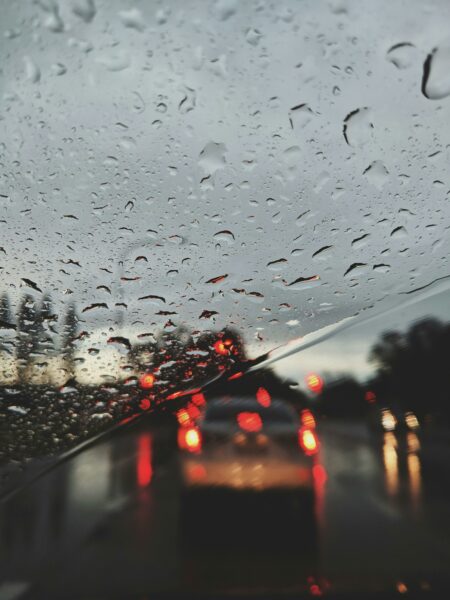In 2022, 353 people died in motor vehicle accidents in Ontario.
How many of those crashes involved self-driving cars? The data for that information doesn’t exist yet – at least, not in Canada.
In the US, however, the National Highway Traffic Safety Administration (NHTSA) has begun collecting data on car crashes involving self-driving cars. This data is intended to help both policy makers and the general public understand the safety, or lack thereof, of these vehicles.
Regulations around self-driving cars is sparse and, as an increasing number of them are expected to hit the roadways in the coming years, the type of information being collected the NHTSA is direly needed. Let’s find out why in this quick review.
What Is a Self-Driving Car?
Let’s begin by exploring the difference between autonomous (self-driving) and semi-autonomous vehicles. While an autonomous vehicle is capable of driving without human input, a semi-autonomous vehicle requires human intervention.
Though there are vehicles equipped with semi-autonomous technology on the road right now, such as Tesla’s Auto Pilot and Ford’s Blue Cruise system, these vehicles are not fully autonomous or self-driving. For the most part, what we think of as self-driving vehicles are currently limited to driver-assist programs that have some control over steering, speeding, and crash avoidance.
The companies that sell these vehicles continue to caution that drivers are still responsible for most of driving while using these vehicles. They maintain that it’s a driver’s responsibility to be in control at all times.
Stats on Self-Driving Car Crashes
According to the NHTSA report, which is based on data from manufactures of self-driving cars, there were almost 400 crashes involving semi-autonomous vehicles between July 2021 to May 2022. A total of twelve companies reported crashes involving semi-autonomous vehicles that they manufacture.
Tesla reported 273 of these, accounting for 70% of the total, and Honda reported 90 crashes, the second-largest figure after Tesla.
Despite these incidents, this industry shows no signs of slowing down. In 2020, the global autonomous vehicle market was valued at over $76 billion in 2020. By 2030, that number is expected to surpass $2,161 billion.
Regulations and Liability
The NHTSA’s report on car crashes involving semi-autonomous vehicles was the first broad report of its kind. The intention is to have this data updated on a monthly basis in order to provide up-to-date insight into the relative safety of these vehicles. Until now, nothing like it existed.
This data can be used by the public, policy makers, and the NHTSA itself. For a public that seems weary about the widespread adoption of this technology, this dataset tracks their safety record and will either prove or disprove their fears. Perhaps more importantly, though, the data will allow policy makers and the NHTSA to begin thinking about appropriate regulatory approaches and enforcement actions.
This is especially critical in terms of liability concerns. Right now, it’s unclear who is liable when a driver is involved in an accident with a self-driving vehicle. Should the owner of the vehicle be held liable, or the manufacturer? As it currently stands, owners are held accountable when they’ve struck another driver. This is because manufacturers have made it clear that driver’s are still very much required to do the majority of the driving in these vehicles.
But what should happen when we’ve moved into the era of fully-autonomous vehicles? If manufacturers release vehicles that are not intended to involve a human driver, who will be held liable for accidents, if they do occur?
If this ultimately falls under product liability law, individuals may have a more difficult time proving liability and claiming damages than one might expect. A product liability lawsuit places the burden of establishing proof of injury, proof of a defect, proof of appropriate use and a connection between the injury and the defect, on the injured – and the fact that an autonomous vehicle did not work as advertised might not be enough to convict a manufacturer.
Without regulations around self-driving vehicles, and a lack of precedent for these types of situations, questions like these are sparking significant and important debate. This is why information like that being gathered by the NHTSA is becoming increasingly necessary.
Problems with NHTSA Data
Some groups have been critical of the data collected by the NHTSA, stating that, as it stands, there’s simply not enough to make any conclusions about the safety and use of semi-autonomous vehicles. The NHTSA admits that there are flaws in the information they’ve collected.
For example, manufacturers were required to report crashes when driver assistance programs were operating up to 30 second before the crash. A crash included collisions with pedestrians and cyclists, airbag deployment, or anything that resulted in the hospitalization of a victim. But not all manufactures have access to this data. The fact that Tesla receives real-time data on these types of incidents, while others do not, may account for why Tesla was responsible for nearly 70% of the crashes reported.
Until such time as all manufacturers can access this type of data regarding their semi-autonomous vehicles, the report cannot be assumed to be statistically representative. But this, we believe, signals the need for regulation even more so.
Involved in a Crash with a Self-Driving Car?
Self-driving cars aren’t a reality yet, but semi-autonomous vehicles are already on the road in droves. As the number of semi-autonomous vehicles increases, and we move into an era where vehicles are becoming closer and closer to driving autonomously, the need for data around the safety of these vehicles is critical. Even more importantly, regulations and laws around liability are needed sooner than later.
If you’ve been involved in a crash with a self-driving car, either as a victim or a driver, the road ahead is a long one. At Sharma Law, we’re on the forefront of personal injury involving this new technology. Contact us to find out more.


